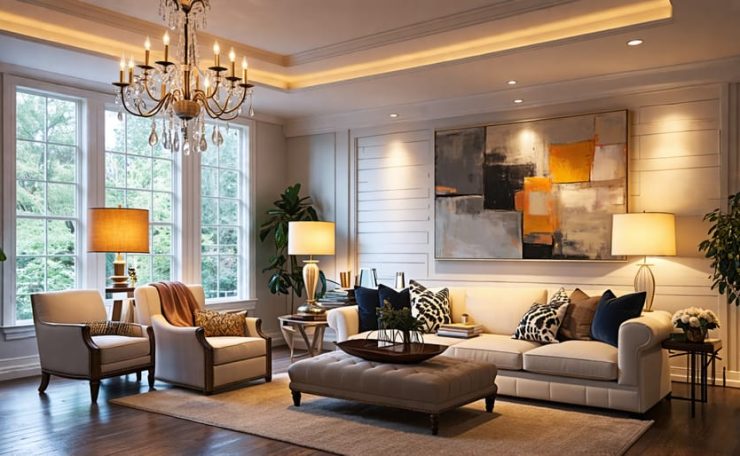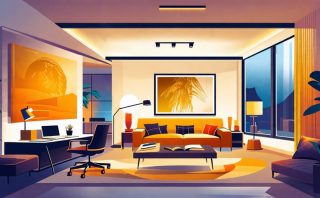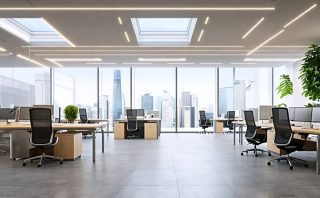Illuminate your living space with layered lighting. Combine ambient, task, and accent lights to create depth and functionality. Opt for recessed lights or chandeliers to establish ambient lighting. Select task lights, like desk or under-cabinet lights, for specific activities. Enhance features with accent lighting, such as track or picture lights, which draw attention to artwork or architectural elements. Tailor these methods to suit each room’s unique requirements, balancing aesthetics and efficiency.
Key Elements of a Successful Lighting Plan
Understanding Lighting Needs
Understanding lighting needs begins with evaluating the purpose and function of a space. For living areas, ambient lighting should create a warm, welcoming environment, often achieved with ceiling fixtures or wall sconces. In contrast, task lighting is essential for areas requiring focus, such as home offices or kitchens; here, consider adjustable desk lamps or under-cabinet lighting, which provide directed illumination for specific tasks. Accent lighting adds depth and highlights architectural features or artwork, often using spotlights or track lighting.
When planning commercial spaces, it’s crucial to balance these types for optimal functionality and aesthetics. Retail environments, for example, benefit from bright, even lighting to enhance product displays, while restaurants might prioritize ambient lighting for atmosphere, complemented by accent fixtures to spotlight art or decor. For a personalized approach, assessment of existing lighting, room dimensions, and client preferences is key. This ensures each space not only meets its functional needs but also achieves the desired aesthetic effect, creating harmonious and well-lit environments tailored to individual requirements.
Balancing Functionality and Design
In creating a lighting plan that balances functionality and design, it’s essential to marry the practical needs of a space with aesthetic appeal. Begin by identifying the primary purpose of each room. For instance, task lighting is crucial in kitchens and offices where visibility is key, while ambient lighting sets the mood in living rooms and bedrooms. Design should never compromise practicality; instead, it should enhance it. A statement chandelier, for example, can serve as a focal point while providing adequate light. Layering different light sources—such as combining overhead lights with floor lamps or sconces—adds depth and flexibility, allowing users to adjust lighting based on activities or time of day. Attention to lighting fixtures’ design ensures that they complement the overall decor while fulfilling the space’s functional requirements. By considering both aesthetics and usability, one can create a harmonious lighting plan that satisfies both the eye and the practical needs of everyday use.
Residential Lighting Plan Examples
Living Room Lighting Techniques
Enhancing the living room with the right lighting techniques can significantly boost both comfort and style. A strategic blend of various lighting types—such as ambient, task, and accent lighting—can transform your space into a dynamic and inviting area. Begin with ambient lighting to establish a base layer of illumination. Overhead fixtures or ceiling-mounted lights often work best to provide this general layer of light. Then, integrate task lighting to illuminate specific areas where activities like reading occur. Consider placing floor lamps near seating areas or using table lamps to provide focused, practical lighting solutions.
Accent lighting is a crucial element, enabling you to highlight art, architectural features, or even create mood effects. Wall sconces and LED strip lights can be used creatively to spotlight these features, adding depth and dimension to your space. Incorporating smart lighting solutions can further enhance flexibility and allow you to adjust settings for different times and occasions effortlessly.
By layering lights in this manner, you create a visually engaging environment. Each layer can work independently or combine to influence the overall ambiance of the room, making it essential to choose the right fixtures and placement. This thoughtful approach not only enhances daily living but also provides a stylish touch that reflects personal taste and design intent.
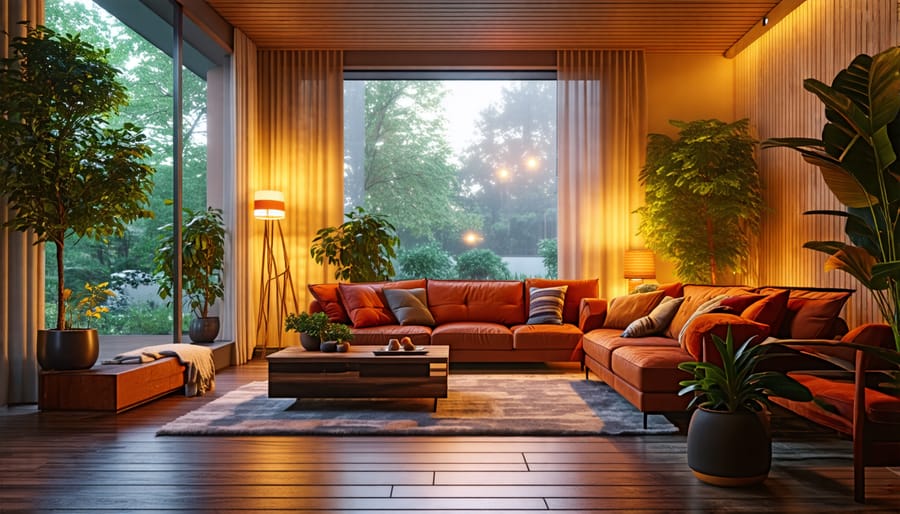
Kitchen and Dining Areas
Creating a well-thought-out lighting plan for kitchen and dining areas involves balancing both functionality and aesthetic appeal. In kitchens, task lighting is crucial, as it ensures a practical workspace. One effective strategy is implementing under cabinet lighting, which provides direct illumination to countertops, enhancing both safety and visibility for meal prep. LED strips are a popular option due to their energy efficiency and sleek design, offering bright, focused light without being obtrusive.
In dining areas, ambiance is the key focus. Here, pendant lights or chandeliers can serve as focal points, offering both style and sufficient light over the dining table. Dimmable options allow for flexibility, adapting the mood from lively dinners to intimate gatherings. Consider layered lighting by incorporating wall sconces or recessed lights, which can add depth and warmth, enhancing the room’s overall atmosphere.
For those looking for a personalized touch, consider consulting a lighting specialist who can tailor solutions based on individual preferences and space requirements. Modern fixtures with adjustable features or smart lighting solutions can optimize both effort and energy usage. The right lighting plan not only enhances functionality but also uplifts the overall design, creating a harmonious blend of practicality and elegance in your home.
Commercial Lighting Plan Examples
Office Spaces
In office spaces, effective lighting plans are indispensable for boosting productivity and promoting well-being. A well-designed lighting scheme considers the balance between natural and artificial light to create an environment that reduces eye strain and fatigue. Incorporating task lighting, like adjustable desk lamps, helps focus on specific work areas, providing clear illumination for detailed tasks. Ambient lighting, achieved through strategically placed ceiling fixtures or recessed lighting, ensures a warm and inviting atmosphere that fosters collaboration and communication. For a more personalized experience, consider adaptable lighting solutions that allow employees to modify brightness levels according to their preferences. Incorporating daylighting, which maximizes the use of natural light, can also enhance mood and energy levels while potentially reducing energy costs. Overall, selecting the right lighting fixtures and arrangements tailored to the needs of the workspace can transform a standard office into a dynamic, efficient, and comfortable environment.
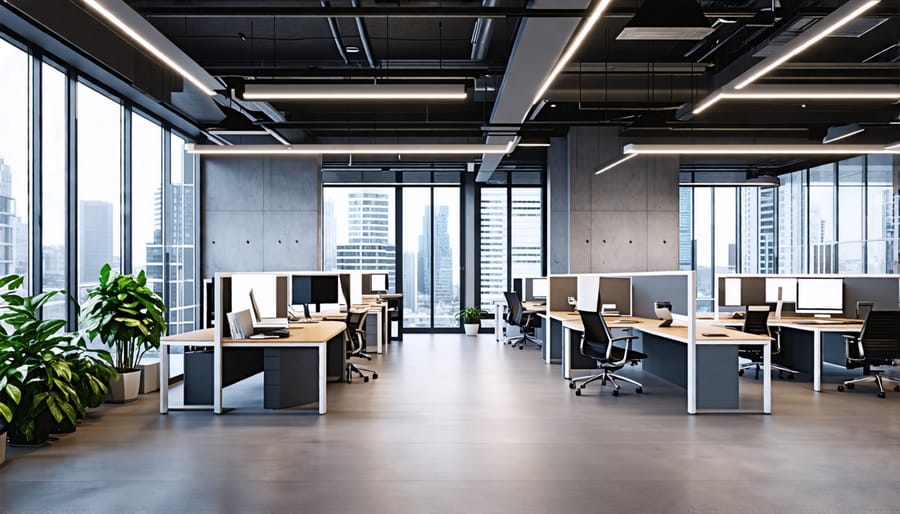
Retail and Hospitality
Creating an inviting atmosphere in retail and hospitality settings through effective lighting is crucial for attracting and retaining customers. A well-thought-out lighting plan can dramatically enhance customer experience by highlighting products and defining spaces. In retail environments, using accent lighting to draw attention to new arrivals or promotions is a proven strategy. This can be achieved with track lighting or spotlights that provide a dynamic and focused illumination, making products more appealing.
In hospitality settings, ambient lighting plays a key role in setting the mood and ensuring comfort. Soft, diffused lights like pendant lights or wall sconces can create a warm and welcoming atmosphere, encouraging guests to linger. Additionally, integrating smart lighting solutions allows for versatile adjustments as needed throughout the day, optimizing energy efficiency and ambiance.
Consider layered lighting techniques that combine ambient, task, and accent lighting to enrich the overall aesthetic and functionality of the space. Such comprehensive plans not only enhance visibility and allure but also reflect the brand’s identity and values, creating memorable experiences for guests and shoppers alike.
Event Lighting Plan Inspirations
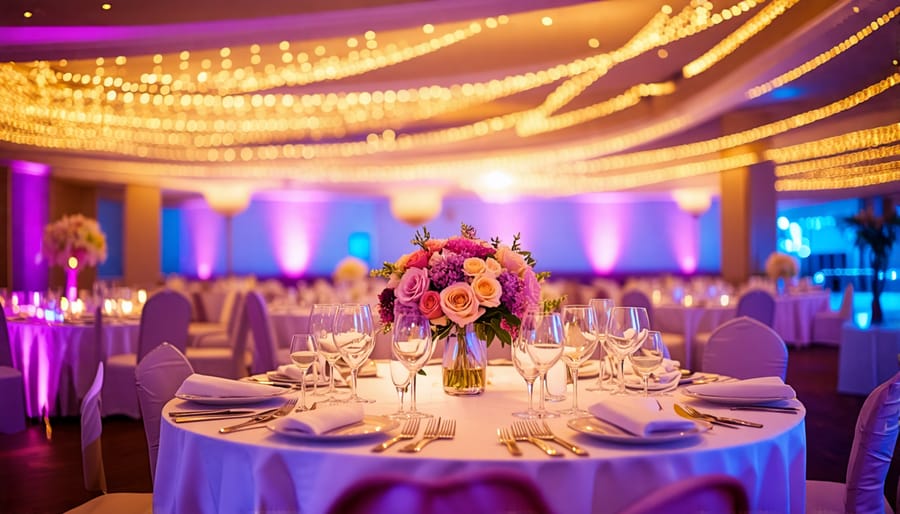
Wedding and Celebrations
Creating the perfect lighting plan for weddings and celebrations can transform any venue into a breathtaking space. For a romantic ambiance, consider using candlelit lanterns and fairy lights strung across tables and trees, offering a warm glow and intimate setting. Uplighting is another popular choice; positioned strategically, it highlights architectural features and adds depth with a choice of colors to match the event’s theme. String lights, draped elegantly across ceilings, enhance outdoor spaces with a starry-night feel. For a touch of drama and sophistication, chandeliers or pendant lights can be incorporated into interior settings. These options not only improve visibility but also contribute significantly to the overall atmosphere, ensuring that the lighting becomes an integral part of the celebration’s beauty and magic.
Corporate Events
Creating the perfect lighting plan for corporate events involves strategic thinking and precision to reflect brand values and professionalism. Key elements include utilizing ambient lighting to set the overall tone, with task lighting to emphasize specific areas such as podiums or banners. Ensuring the color temperature aligns with the brand’s identity can enhance the event’s thematic coherence. Employing dynamic lighting techniques, like moving lights or synchronized systems, can engage attendees and reinforce branding. Consulting with expert lighting design professionals can offer tailored solutions that combine functionality with aesthetics. This approach not only highlights key event features but also enhances audience experience, ensuring every corner of the venue serves its purpose while maintaining a polished, cohesive look.
Conclusion
Thoughtful lighting planning is essential for creating spaces that are both functional and aesthetically pleasing. With the right lighting strategy, homeowners, designers, and business owners can enhance the ambiance and utility of any environment, be it a cozy living room or a bustling commercial space. Consulting with a lighting professional is highly recommended to tailor solutions that suit specific requirements and preferences. Expert guidance can provide invaluable insights into optimizing light placement, selecting appropriate fixtures, and ensuring energy efficiency. By investing in professional consultation, you can transform your vision into a well-lit reality that highlights the unique features of your space.

